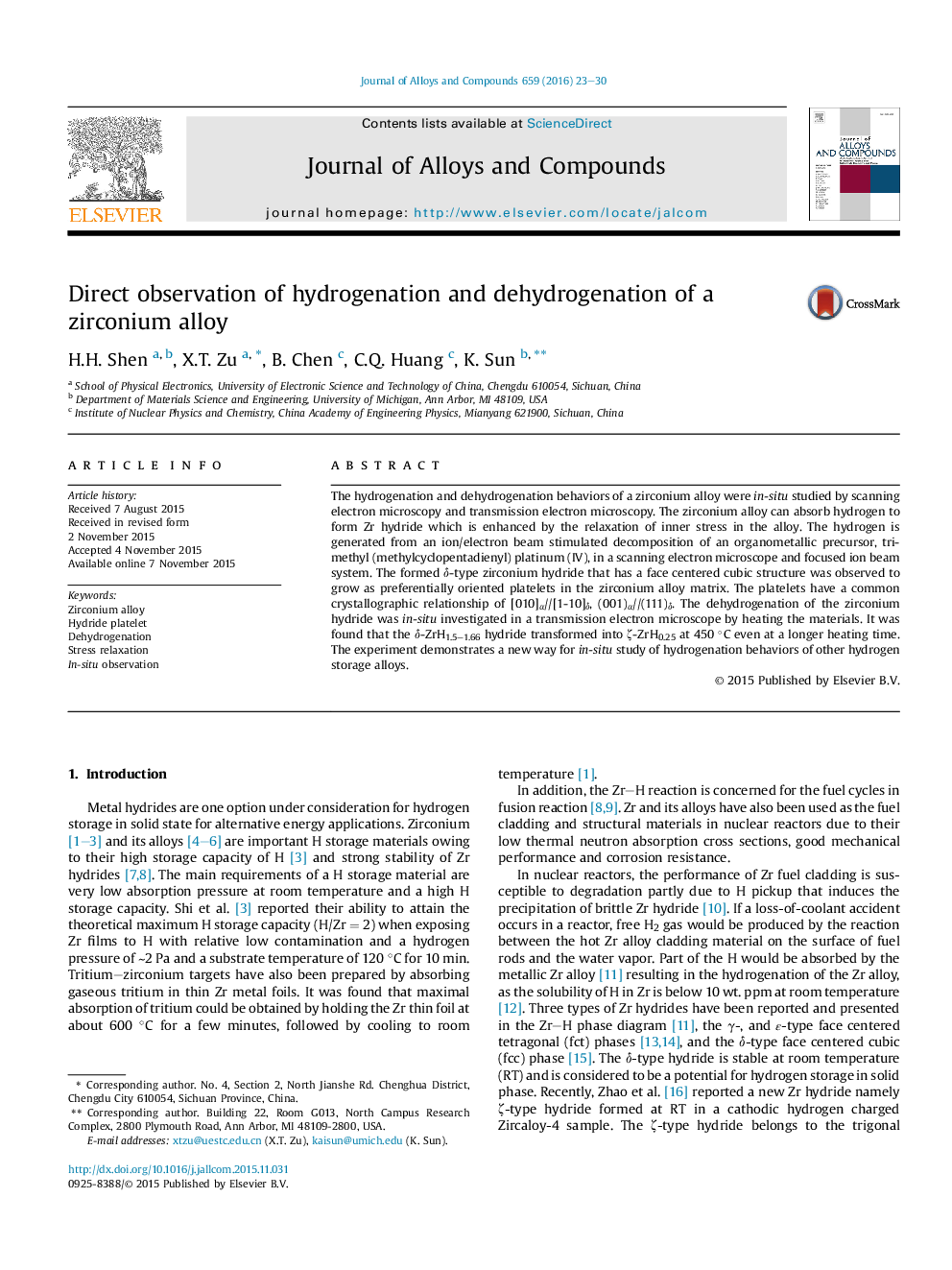| Article ID | Journal | Published Year | Pages | File Type |
|---|---|---|---|---|
| 1607227 | Journal of Alloys and Compounds | 2016 | 8 Pages |
Abstract
The hydrogenation and dehydrogenation behaviors of a zirconium alloy were in-situ studied by scanning electron microscopy and transmission electron microscopy. The zirconium alloy can absorb hydrogen to form Zr hydride which is enhanced by the relaxation of inner stress in the alloy. The hydrogen is generated from an ion/electron beam stimulated decomposition of an organometallic precursor, trimethyl (methylcyclopentadienyl) platinum (IV), in a scanning electron microscope and focused ion beam system. The formed δ-type zirconium hydride that has a face centered cubic structure was observed to grow as preferentially oriented platelets in the zirconium alloy matrix. The platelets have a common crystallographic relationship of [010]α//[1-10]δ, (001)α//(111)δ. The dehydrogenation of the zirconium hydride was in-situ investigated in a transmission electron microscope by heating the materials. It was found that the δ-ZrH1.5-1.66 hydride transformed into ζ-ZrH0.25 at 450 °C even at a longer heating time. The experiment demonstrates a new way for in-situ study of hydrogenation behaviors of other hydrogen storage alloys.
Related Topics
Physical Sciences and Engineering
Materials Science
Metals and Alloys
Authors
H.H. Shen, X.T. Zu, B. Chen, C.Q. Huang, K. Sun,
